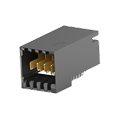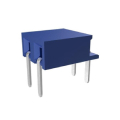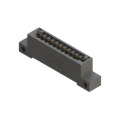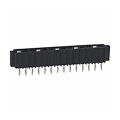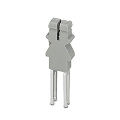Wire & PCB (Printed Circuit Board) connectors are essential for linking boards, wires, and subsystems into complete assemblies. From high-density headers and FFC (Flexible Flat Cable) interconnects to rugged backplane and card edge designs, these connectors form the backbone of electronic builds.
At Online Components, we offer more than 1.6 million wire & PCB connectors from 120+ authorized suppliers, including TE Connectivity, Phoenix Contact, Amphenol, and Samtec. With U.S.-based inventory, fast shipping, and competitive pricing, you can source confidently whether you’re building prototypes or scaling production.
Start with current, voltage, and pitch. High-density headers support compact layouts; larger-pitch blocks allow higher currents and easier field wiring.
PCB connectors come in through-hole (THT) for mechanical strength, or surface-mount (SMD) for automated assembly. For field wiring, terminal blocks and IDC connectors reduce install time.
Consider mating cycles, locking mechanisms, and insulation ratings. Production environments and harsh conditions may require reinforced housings, polarization, or strain relief.
Always compare datasheets for pin pitch, plating, housing material, and mating compatibility. Even standard formats (headers, sockets, card edge) can vary slightly by manufacturer. Testing alternates during prototyping prevents costly redesigns later.
Depending on your assembly process, connectors may come in trays, reels, tubes, or bulk. For high-speed SMT (Surface-Mount Technology) lines, tape-and-reel packaging improves throughput. For manual or service assembly, trays or bulk are often more practical.
Micro-pitch headers, mezzanine board-to-board connectors, and FFC/FPC (Flexible Flat Cable/Flexible Printed Circuit) connectors are frequently used. They balance space savings with electrical performance, but require precise placement during PCB design.
Select connectors with locking features, polarization, and reinforced housings. Automotive and industrial-rated parts often meet these requirements. Checking vibration and shock test data in the manufacturer’s spec sheets ensures long-term reliability.
See More
